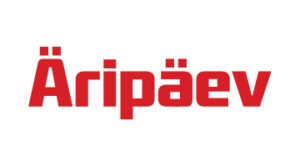How Do You Measure Employee Wellbeing
In Firmafitness we believe that successful company starts with a strong team. We’re happy to announce that we’ve entered into a partnership with Vaeliou Whose goal is to create a steong working culture through scientific approach. Thanks to this, the company attracts the best candidates, which creates favorable ground for the company’s development and growth in the long term.
In cooperation with Vaeliou, we wrote an article about the importance of employee well-being. Useful reading for everyone, but especially for those in whose organization remote work is gaining popularity.
How to measure employee wellbeing.
Remote work is rising, changing how productivity and flexibility are defined. But this comes with a few complications pushing companies to begin implementing wellbeing programmes to address their employees’ health.
Leaving the office has left some people out of touch, increasing feelings of alienation.
In this article, we’ll look at how remote work can impact employee performance due to various forms of stress. Measuring wellbeing and, upon results, introducing wellbeing programmes can alleviate symptoms of isolation, disengagement, absenteeism, and a host of other physical and psychological issues.
We Cannot Eliminate Stress, Just How We Handle It
Stress can come from heavy workloads, job insecurity, and interpersonal conflicts with team members. Stress affects productivity and efficiency, which reinforces and amplifies stress even more. It can become a vicious cycle.
The effects of job-related strain are evident in workers’ physical health, mental health, and behaviour. Distress leads to elevated blood pressure, paving the way for anxiety, possible heart disease, or even substance abuse. Other forms include mood swings, low energy, and possible headaches.
We cannot get rid of stress completely, but we can change how we deal with it using a variety of solutions. Identifying the causes of stress is the first step towards increasing wellbeing.
The Effects of the Workplace Environment
Physical surroundings play a huge role in our emotional and psychological health, but with the advent of remote work, people feel more isolated. Separation can increase the risk of anxiety, significantly affecting productivity. To feel recharged, people need to feel they belong. A sense of belonging is critical for people to bring out the very best in themselves and, as such, remain engaged.
Wellbeing sessions create support when you listen to one another, giving time to hear what they might be against. If people can’t be physically together, meeting online is beneficial to keeping feelings of isolation at bay.
While wellbeing sessions have a proven positive impact on people and culture, they are only effective when they are meaningful to everyone and are integrated into the work schedule.
Wellbeing, Exactly What Is It?
Research shows that wellbeing is one of 12 identity elements that are critical success factors for fostering engagement and collaboration. Considering the many economic and geopolitical pull factors companies face today, how can you ensure you give your employees’ wellbeing the space it needs?
Wellbeing as a critical success factor describes your physical, medical and psychological condition for you. It includes fitness, health, and the ability to maintain high energy levels in the remote world of work. It describes the extent to which your assumed strength and fitness or a potential illness represents an integral part of your identity. It is a combination of physical, emotional, and psychological integration that aligns with oneself and one’s environment. Balance allows us to handle the pressures of our work gracefully.
Work Reality
sTARTUp Day 2022 showed the importance of wellbeing in company culture. Nonetheless, according to responses (n=308), many teams struggle with keeping up the good spirit.
Solutions For ‘A Healthy Workplace’
Firstly, we recommend measuring the importance of wellbeing for your people. Then, collaboratively, explore what wellbeing means to them.
There are a variety of solutions to help people deal with stress in the workplace. Some companies have included wellness rooms for yoga or meditation, health training, sit-stand desks, nap time, and ergonomic seating. Looking at screens all day with our shoulders hunched and our eyes strained can drastically affect our physical health. Yoga, an ancient science especially helpful in today’s chaotic lifestyle, has innumerable benefits. Even with just 20 minutes, it is straightforward to notice its impacts, such as increased energy, reduced stress levels, improved posture, and increased focus. A calm, resilient mind is crucial when dealing with a demanding work environment.
Healthy Workplace – Healthy Culture – Happy People
Everyone wants to be the best version of themselves, so companies need to prioritise their employee health if they want sustainable satisfaction and creativity. Frustration and anger from stress at work result in less motivated and less productive efforts. Nobody wants to experience defeating circumstances when solutions aren’t there.
Nowadays, health and wellness have entered the discussion around what makes people feel better and do better. Even though technology has altered the way we relate to the world around us, surprisingly, it can make us feel more drained.
It is essential to include a pause throughout the day for employees to connect with themselves in a way that transforms their communication, creativity, and satisfaction. If you want your company and employees to grow and be healthy, give them a break that makes them perform better and feel satisfied.
In summary, best practices are:
- Measure the importance of wellbeing
- Explore what wellbeing means to everyone on the team
- Agree on regular interventions meaningful for everyone
- Follow through with easily accessible wellbeing interventions
If you are interested in boosting employee wellbeing, get in touch! We would be delighted to help you leverage the outstanding opportunity of wellbeing in remote work BOOK A CALL












